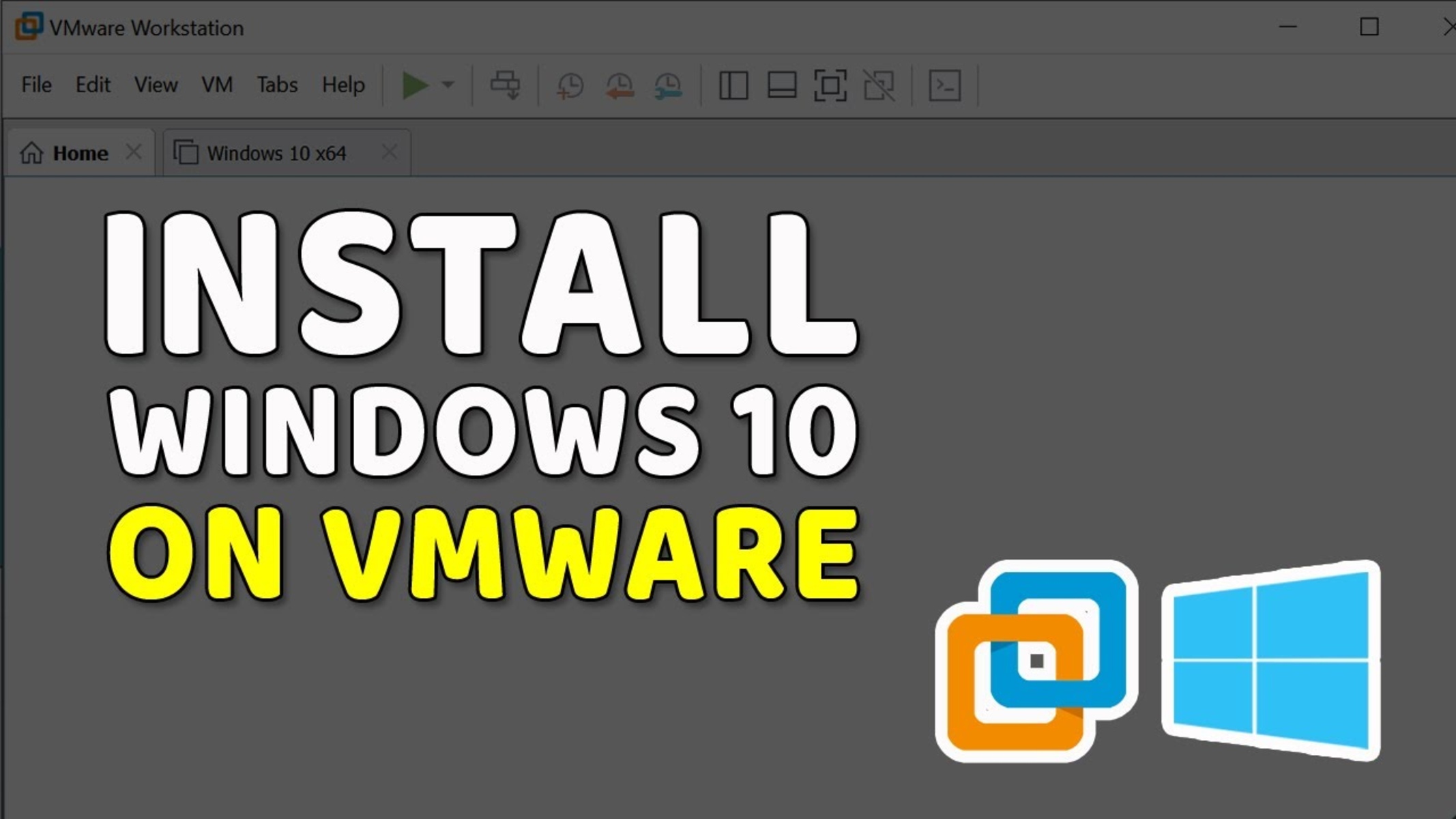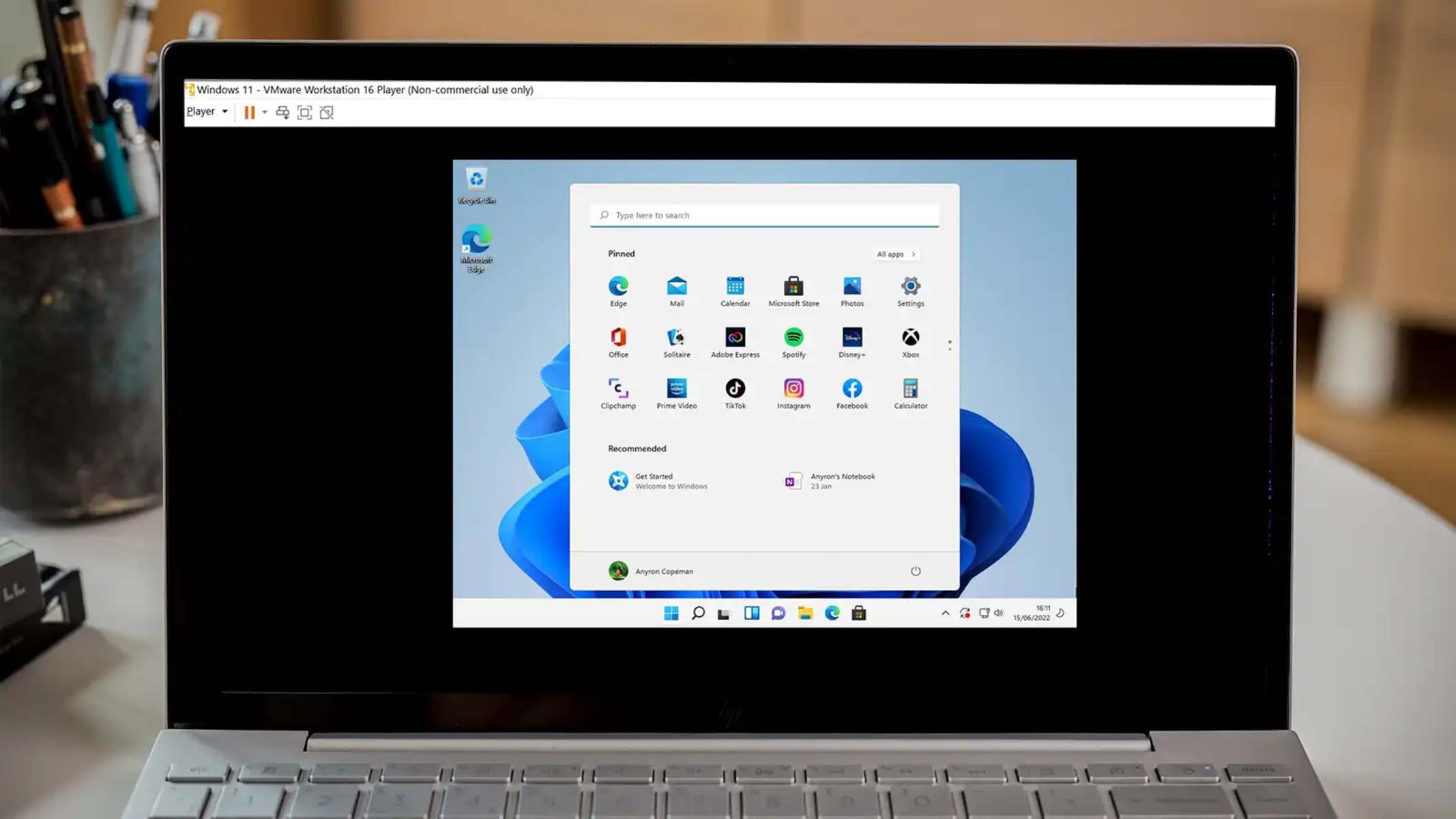Introduction
Welcome to our guide on how to install Windows CE in VMware Workstation. Windows CE (Compact Edition) is a lightweight operating system designed for embedded systems and small devices. By installing Windows CE in VMware Workstation, you can create a virtual environment to test applications and develop software specifically designed for this operating system.
Before we dive into the installation process, it’s important to note that VMware Workstation is a virtualization software that enables you to run multiple operating systems on a single machine. If you haven’t installed VMware Workstation yet, make sure to download and install it on your computer.
Installing Windows CE in VMware Workstation provides an efficient way to experiment with the operating system without the need for a dedicated physical device. This allows developers and enthusiasts to explore the capabilities of Windows CE, develop and test applications, and familiarize themselves with the environment.
In this guide, we will walk you through the step-by-step process of downloading the Windows CE ISO image, creating a new virtual machine in VMware Workstation, configuring the virtual machine settings, installing Windows CE, and optionally installing VMware Tools to enhance the virtual machine’s performance.
In addition to the installation process, we will also provide some insights and tips based on our experience with Windows CE and VMware Workstation. By the end of this guide, you will have a fully functional Windows CE installation running in VMware Workstation, ready for your development and testing needs.
We recommend following each step carefully to ensure a smooth installation process. So let’s get started with step one: downloading the Windows CE ISO image.
Prerequisites
Before you begin the installation process, there are a few prerequisites you need to meet to ensure a successful installation of Windows CE in VMware Workstation. Here’s what you’ll need:
- Computer: Make sure you have a computer with sufficient hardware resources to run VMware Workstation and Windows CE virtual machine. The specific requirements may vary based on the version of VMware Workstation and Windows CE you are using.
- VMware Workstation: Download and install the latest version of VMware Workstation on your computer. You can find the installation package on the VMware website. Follow the installation instructions provided to set up VMware Workstation properly.
- Windows CE ISO Image: Obtain the Windows CE ISO image file. This is the installation media for Windows CE. The ISO image contains all the necessary files and components required to install the operating system.
- Virtual Machine Configuration: Determine the virtual machine configuration you want to use for your Windows CE installation. This includes deciding on the amount of memory, storage, and other settings for the virtual machine. Make sure you have a clear plan in mind before starting the installation process.
- Administrative Access: Ensure that you have administrative access to the computer where you’ll be installing VMware Workstation and Windows CE. Administrative privileges are necessary to create and configure virtual machines.
It’s also recommended to have a basic understanding of virtualization concepts and familiarity with VMware Workstation’s interface. This will help you navigate through the installation process more efficiently and troubleshoot any issues that may arise.
Once you have met all the prerequisites, you are ready to proceed to the next step: downloading the Windows CE ISO image. Make sure you have a stable internet connection to ensure a smooth download process. Take note of the file location as you’ll need to access it later during the installation.
Step 1: Downloading Windows CE ISO Image
The first step in installing Windows CE in VMware Workstation is to download the Windows CE ISO image. This file contains the installation media for Windows CE and is required to proceed with the installation process. Here’s how you can download the Windows CE ISO image:
- Open your preferred web browser and visit the official Microsoft website or trusted third-party websites that offer Windows CE ISO downloads.
- Search for the specific version of Windows CE you want to install. Different versions may have varying features and optimizations, so choose the one that suits your requirements.
- Once you have located the Windows CE ISO image download, click on the link provided to start the download. The file size can range from a few hundred megabytes to several gigabytes, depending on the version and components included.
- Wait for the download to complete. The time it takes may vary depending on your internet connection speed and the size of the ISO image.
- Once the download is finished, navigate to the location on your computer where the ISO file has been saved. Ensure that you have the full and complete ISO file, as any missing or corrupted parts may cause issues during the installation process.
It is important to note that downloading Windows CE ISO images from unofficial or untrusted sources may pose security risks. Therefore, it is strongly recommended to obtain the ISO image from reliable sources, such as the official Microsoft website or trusted partner websites.
Having successfully downloaded the Windows CE ISO image, you are now ready to move on to the next step: creating a new virtual machine in VMware Workstation. This will provide the necessary virtual environment to install and run Windows CE.
Step 2: Creating a New Virtual Machine in VMware Workstation
Now that you have the Windows CE ISO image downloaded, the next step is to create a new virtual machine in VMware Workstation. This virtual machine will serve as the environment in which you’ll install and run Windows CE. Follow these steps to create a new virtual machine:
- Open VMware Workstation on your computer. If you haven’t installed it yet, make sure to download and install the latest version from the official VMware website.
- Click on the “Create a New Virtual Machine” option to start the virtual machine creation wizard.
- Select the “Custom (advanced)” option and click “Next” to proceed.
- Choose the appropriate hardware compatibility for the virtual machine. It is recommended to select the latest version available to ensure optimal performance and compatibility.
- Select “I will install the operating system later” and click “Next”. We will install Windows CE in the next steps.
- Choose the guest operating system as “Other” and select the version of Windows CE you are installing.
- Specify a name and location for the virtual machine, keeping in mind where you want to store the necessary files. It is recommended to allocate sufficient storage space for your Windows CE installation.
- Set the desired network connection options for the virtual machine and click “Next”. The default settings should work fine for most scenarios.
- Review the summary of your virtual machine configuration and click “Finish” to create the virtual machine.
Once you’ve completed these steps, the virtual machine will be created in VMware Workstation, ready for you to install Windows CE. In the next step, we will configure the settings of the virtual machine to prepare for the installation process.
Step 3: Configuring the Virtual Machine Settings
After creating the virtual machine in VMware Workstation, the next step is to configure its settings to ensure smooth installation and optimal performance of Windows CE. Follow these steps to configure the virtual machine settings:
- Select the newly created virtual machine in the VMware Workstation interface.
- Click on the “Edit virtual machine settings” option to open the settings window.
- Adjust the memory allocation by selecting the “Memory” tab. Allocate an appropriate amount of memory based on the requirements of Windows CE and the resources available on your computer.
- Select the “Hard Disk (SCSI)” option and click on the “Add” button. This will allow you to add a new virtual hard disk for the Windows CE installation.
- Choose the “Create a new virtual disk” option and click “Next”.
- Specify the size of the virtual disk. It is recommended to allocate enough space to accommodate the operating system and any additional applications or files you plan to use with Windows CE.
- Customize the virtual disk settings as per your preference, such as the disk file location and format.
- Review the summary of the virtual machine settings and make any necessary adjustments.
- Click “Finish” to apply the changes and save the virtual machine settings.
Configuring the virtual machine settings properly is crucial for a successful installation and optimal performance of Windows CE. By allocating sufficient memory and disk space, you ensure that the operating system and any applications within it have the resources they need. Additionally, customizing settings like the disk file location and format allows you to optimize storage utilization and meet your specific requirements.
With the virtual machine settings configured, you are now ready to proceed with installing Windows CE in VMware Workstation. In the next step, we will guide you through the installation process to get Windows CE up and running.
Step 4: Installing Windows CE in VMware Workstation
With the virtual machine settings configured, you can now proceed with installing Windows CE in VMware Workstation. Follow these steps to install Windows CE:
- Start the virtual machine by selecting it in VMware Workstation and clicking on the “Play” button.
- A window will open, displaying the virtual machine’s console. Click on the “CD/DVD” option in the toolbar at the top of the window.
- Select “Use ISO image file” and click on the “Browse” button to locate and select the Windows CE ISO image file you downloaded in the previous step.
- Click “OK” to confirm the ISO image selection.
- Press Enter to begin the boot process of the virtual machine.
- Follow the on-screen instructions to proceed with the Windows CE installation. This typically involves selecting the installation language, accepting the license terms, and choosing the installation location.
- During the installation, you may be prompted to configure additional components or features of Windows CE. Make the desired selections based on your requirements.
- Wait for the installation process to complete. This may take some time, depending on your system’s resources and the size of the ISO image.
- Once the installation is finished, the virtual machine will restart. At this point, Windows CE will be installed and ready to use.
It is important to follow the on-screen instructions carefully during the installation process to ensure a successful installation. Keep in mind that the specific steps and options may vary depending on the version of Windows CE you are installing.
Once the installation is complete and the virtual machine has restarted, you will have a fully functional Windows CE installation running in VMware Workstation. In the next step, we will guide you through the final steps to complete the Windows CE installation process.
Step 5: Completing the Windows CE Installation
After the initial installation of Windows CE in VMware Workstation, there are a few final steps to complete the setup and ensure smooth operation of the operating system. Follow these steps to complete the Windows CE installation:
- Log in to the Windows CE virtual machine using the credentials you set during the installation process.
- Configure basic settings such as date, time, and language preferences according to your requirements.
- Install any necessary drivers or software that are specific to your application or development needs. This may include device drivers, development tools, or additional software packages.
- Set up network connectivity by configuring the appropriate network settings. This will enable you to connect to the internet or other devices within your network.
- Customize the desktop and user interface settings based on your preferences. This includes adjusting display resolution, desktop background, and other visual elements.
- Ensure that all necessary updates and patches are applied to keep your Windows CE installation up to date with the latest fixes and improvements.
- Test the functionality and performance of Windows CE by running basic tasks and applications. This will help identify any issues or compatibility concerns that may need to be addressed.
- Create regular backups of your Windows CE virtual machine to safeguard your work and ensure you can easily restore the system if needed.
By following these steps and completing the necessary configurations, you will have successfully completed the installation of Windows CE in VMware Workstation. Now, you can begin exploring the features and functionalities of Windows CE, developing applications, and testing your software in this virtual environment.
It is important to familiarize yourself with the Windows CE documentation and resources to fully utilize the capabilities of the operating system. Additionally, be sure to refer to VMware Workstation’s documentation for guidance on managing, optimizing, and troubleshooting virtual machines within the VMware environment.
Congratulations on completing the installation of Windows CE in VMware Workstation! In the next step (optional), we will guide you on installing VMware Tools to enhance the performance and functionality of your virtual machine.
Step 6: Installing VMware Tools (Optional)
Installing VMware Tools in your Windows CE virtual machine is an optional step, but highly recommended to enhance the performance and functionality of the virtual machine. VMware Tools provides additional drivers, utilities, and features that improve the integration between the host operating system and the virtual machine. Follow these steps to install VMware Tools:
- Ensure that your Windows CE virtual machine is powered on and logged in.
- In the VMware Workstation menu, go to “VM” and select “Install VMware Tools”.
- A virtual CD/DVD drive will be mounted in the Windows CE virtual machine.
- Open the virtual CD/DVD drive in Windows CE and run the VMware Tools installation program.
- Follow the on-screen instructions to complete the VMware Tools installation process.
- Once the installation is complete, restart the Windows CE virtual machine to apply the changes.
After the restart, you will benefit from improved graphics performance, mouse integration, shared folders, clipboard sharing, and other features offered by VMware Tools. This will enhance the usability and productivity of your Windows CE virtual machine within the VMware Workstation environment.
It’s worth noting that VMware Tools should be kept up to date to align with the version of VMware Workstation you are using. You can check for updates and install the latest version of VMware Tools by following the same steps mentioned above.
With VMware Tools installed, you can now take full advantage of the advanced features and seamless integration provided by VMware Workstation, making your Windows CE virtual machine more efficient and user-friendly.
At this point, you have successfully completed the installation of Windows CE in VMware Workstation and optionally installed VMware Tools. Now, you can begin utilizing Windows CE and VMware Workstation to develop, test, or explore the possibilities of this lightweight operating system.
Conclusion
Congratulations on successfully installing Windows CE in VMware Workstation! You have now created a virtual environment where you can develop, test, and explore the capabilities of this lightweight operating system.
Throughout this guide, we covered the necessary steps to install Windows CE in VMware Workstation. We started by ensuring that you had the required prerequisites, including VMware Workstation, the Windows CE ISO image, and administrative access to your computer. Then, we walked you through each step, from downloading the ISO image to creating a new virtual machine, configuring its settings, and installing Windows CE. We also discussed the optional step of installing VMware Tools, which can greatly enhance the functionality of your virtual machine.
By following these steps and configuring your Windows CE virtual machine properly, you can now take advantage of all the features Windows CE has to offer. This includes developing applications specifically tailored for embedded systems and small devices, as well as testing software compatibility and performance in a controlled environment.
As you continue your journey with Windows CE in VMware Workstation, remember to refer to the official documentation and resources for further guidance and support. Stay up to date with the latest updates, patches, and developments in the Windows CE community to maximize your experience with the operating system.
Thank you for following this guide on how to install Windows CE in VMware Workstation. We hope you find this virtual environment useful for your Windows CE-related projects and endeavors. Enjoy exploring the possibilities of this lightweight operating system!

























